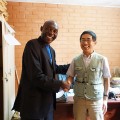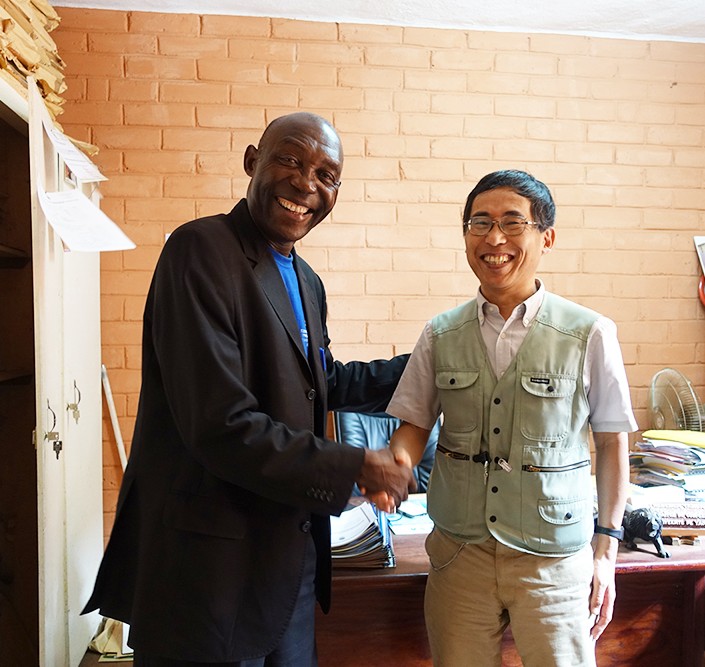
Report from Germany, France, and Cameroon
Kyoto University Graduate School of Asian & African Area Studies
Professor Daiji Kimura
From December 10th to the 21st, 2016, I joined research meetings, presented research, and gathered materials in Germany, France, and Cameroon.
In Germany, I firstly visited Cologne, and on December 11th, I had a meeting with Dr. Zi Yanyin, a young researcher sent by our project to stay at the University of Cologne. We had a lively conversation, discussing such topics as her book scheduled for publication with a grant from the Center for African Area Studies, trends among researchers at the University of Cologne, and the differences between Japan and Germany regarding the methods of teaching Graduate School students. (Photo 1: With Dr. Zi in front of the Cologne Cathedral)
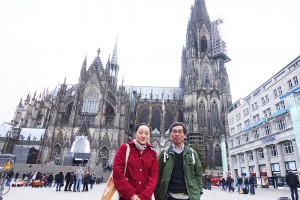 Photo 1
Photo 1
Subsequently, on the 12th, I had a meeting with one of our project’s associate researchers, Dr. Thomas Widlok (a professor of the Cologne University Global South Studies Center). Dr. Widlok is an old acquaintance of mine as a hunter-gatherer researcher, and we spoke over lunch. We were joined by Charlie Goodwin, who will come to the Kyoto University Graduate School of Asian & African Area Studies in January, and the Zimbabwean researcher Obert Bernard Mlambo. I have had several interactions with Mr. Goodwin on the survey methods of his research in Namibia, and I would like to continue having such discussions after his arrival in Japan.
On the 13th, I travelled from Cologne to Bremen by train, visited Dr. Martin Gruber (Bremen University Institute of Anthropology & Cultural Studies) (Photo 2 was taken with Dr. Gruber), a visual anthropologist who is taking videos of apiculture in Cameroon, and gave a presentation entitled “The Congo War, the Long-Distance Walking Trade, and Bushmeat Hunting” at a colloquium of the Bremen University Institute of Anthropology & Cultural Studies. The discussion with Dr. Gruber gave me a renewed sense of how visual anthropological ethnography provides us with a crucial method for thinking about future African area studies and, in particular, of the deep involvement of the “spatial and temporal organization of the area” in our project. The colloquium saw participation from five members of the academic staff and ten students. The content of the presentation addressed the civil war’s destruction of transport links in the central Democratic Republic of the Congo, which has resulted in a thriving trade in bushmeat hunting and forest clearance to earn money, and in the discussion after the presentation, several people asked questions about the local people’s opinions of natural conservation. It is difficult to respond to this problem simply, and although I was unable to explain it successfully at the time, I did recognize the need to summarize the controversy surrounding this point in the future. The colloquium was also quite beneficial to my own research. (Photo 3: A meal after the colloquium at Bremen University)
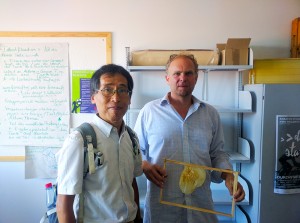 Photo 2
Photo 2
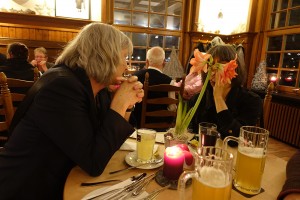 Photo 3
Photo 3
On the 14th, I took a flight from Bremen to Paris. I found accommodations very close to the Harmattan bookstore, which is known for collecting books on Africa (Photo 4: L’Harmattan bookstore, Paris), and after exploring books on African area studies, I bought six books on the DR Congo.
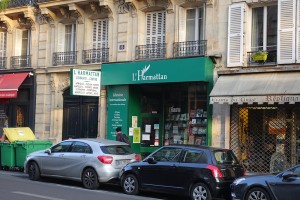 Photo 4
Photo 4
On the 15th, I flew from Charles de Gaulle airport in Paris to Cameroon’s capital of Yaoundé. I arrived at around 8:30 at night, but the car that I had requested from the Institut de Recherche Agricole pour le Developpement (IRAD) did not arrive. I therefore made my way to the hotel in the city center by taxi. I stayed in Yaoundé until the evening of the 19th, until which time I checked on the status of the rent payment and management of the Cameroon Field Station rented by the Graduate School of Asian and African Area Studies (and also used by our project), visited Dr. Ndo Eunice Epse Mfou’ou of IRAD (Photo 5: With Dr. Ndo of IRAD), and visited Professor Mebenga Tamba Luc (Photo 7: With Professor Mebenga of the University of Yaoundé I) from the University of Yaoundé’s Department of Anthropology (Photo 6: The Anthropology Department’s building at the University of Yaoundé I). Unfortunately, I was unable to meet our project’s principal research associate, Professor Mbonji Edjenguélé, as he was away; however, I was able to exchange opinions on future research collaboration with Professor Mebenga. I also met with Dr. Mikako Toda of the National Museum of Ethnology, who had come to Cameroon with use of the Kyoto University President’s Discretionary Budget for “the security of overseas research” (Photo 8: Materials gathered by Dr. Mikako Toda) and obtained various materials on security from the Japanese Embassy and the JICA Field Office.
 Photo 5
Photo 5
 Photo 6
Photo 6
 Photo 7
Photo 7
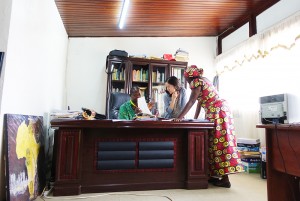 Photo 8
Photo 8
On the 19th, I departed Yaoundé, and after changing flights in Paris and Amsterdam, I arrived at Kansai Airport on the 21st. Despite a rather rushed schedule, I believe I was able to further the research cooperation in various ways at numerous locations.

